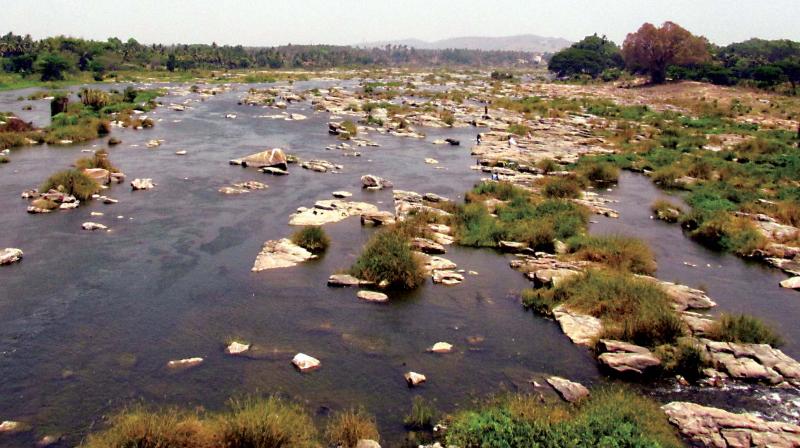Bengaluru: Save water or there will be none in 70 days
Without rationing, taps in city could run dry by June.

Bengaluru: The city’s water supply situation looks precarious with the Krishna Raja Sagar dam left with storage enough for only another 70 days and the Supreme Court directing the state to release 2000 cusecs of water to Tamil Nadu.
Recalling that the city was in the same rocky boat last year, water expert and urban planner, Vishwanath, however, points out that the rain gods ultimately relented and the situation improved June onwards.
But this year things look far worse given the dipping water levels at the Cauvery dams, according to him. “If water rationing isn't started anytime soon, the city could run out of water from June,” he warns, explaining, "Every day the BWSSB pumps 1350 MLD of water to the city, which needs 1.5 TMC every month from the Cauvery for its needs. Currently all the four dams in the Cauvery basin have very poor storage. The KRS had just 5.85 TMC of water as on March 24, enough to meet the city’s needs for another 70 days, or until mid-June. This is a critical situation.”
The water expert laments that the state doesn't seem to have any plans to handle the drought despite the looming crisis. “It should reserve 30 TMC for drinking alone and not spare any of this for agriculture during the year. It should also begin to rejuvenate lakes, speed up rainwater harvesting and promote recycling of sewage. Also, the people should be made aware of the crisis and taught water conservation,” he suggests.
Monsoon below normal in 2017
The warning signs are everywhere. Parts of Karnataka are already in the grip of drought. Now, a private weather company has predicted below normal
rainfall this monsoon, Between June and September, the monsoon season in India could see deficit rainfall in the months of July, August and
September, as there is a fifty percent chance of an El Nino developing in the second half of the monsoon season. El Nino refers to the unusual warming of the surface waters of the Pacific, and is enough to disrupt monsoons. About 70 percent of India's rainfall happens in this period and irrigates almost half of India's farmland, particularly the Kharif crop.

